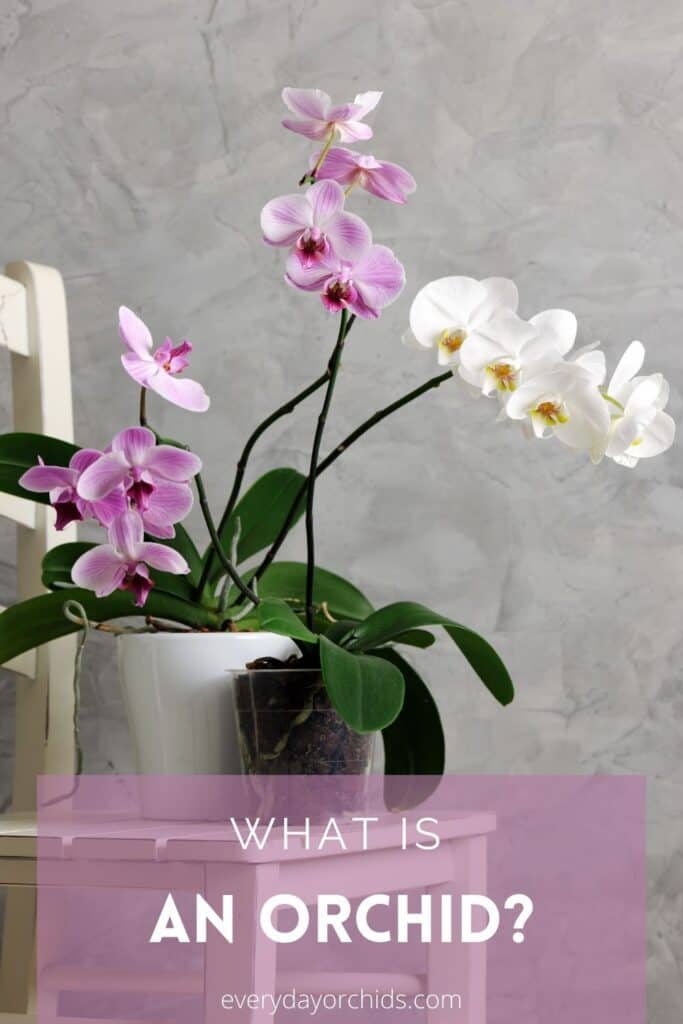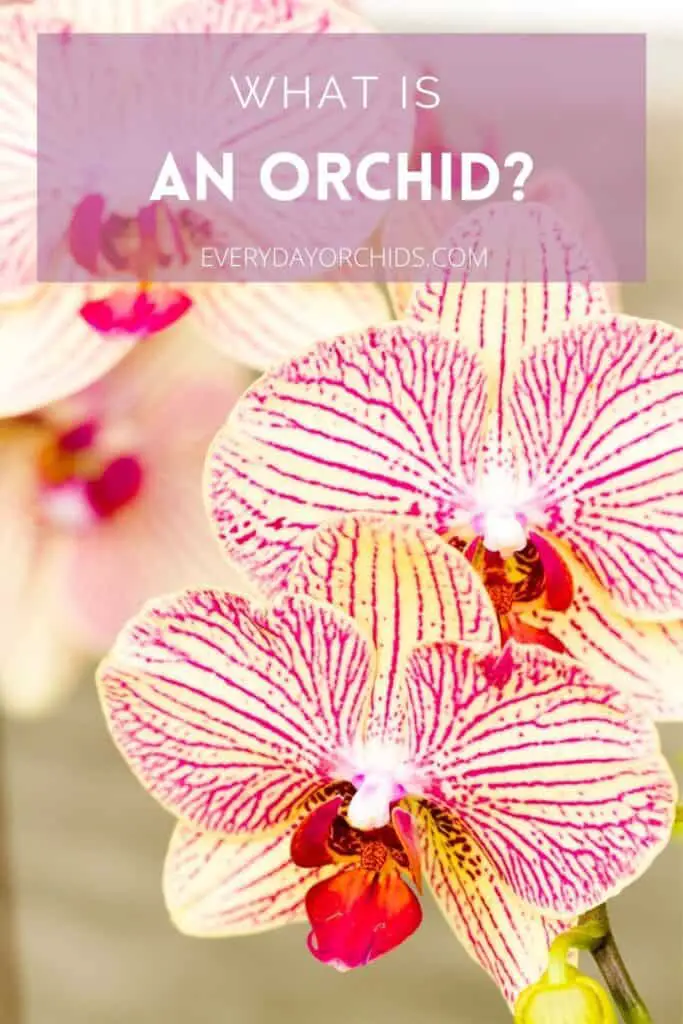Orchids are one of the most popular flowers in the world, and one of the most commonly bought and gifted plants. Are you curious to learn more about orchids and what makes an orchid so unique? You’ve come to the right place.
These beautiful plants comprise 30,000 different species. Orchids have a remarkable ability to adapt to any given environment. You will find orchids thriving in the arctic tundra, the tropics, and anywhere in between. Because of the high plant diversity and superior adaptability, you can grow orchids in your garden, greenhouse, or even in your home.
Orchids are a diverse group of plants belonging to the largest family of flowering plants globally. Most of the orchids grown in homes are epiphytes (air plants) native to the tropics that grow high on trees and other surfaces. They feature thick whitish-green roots that are specially adapted to absorbing moisture and dissolved minerals.
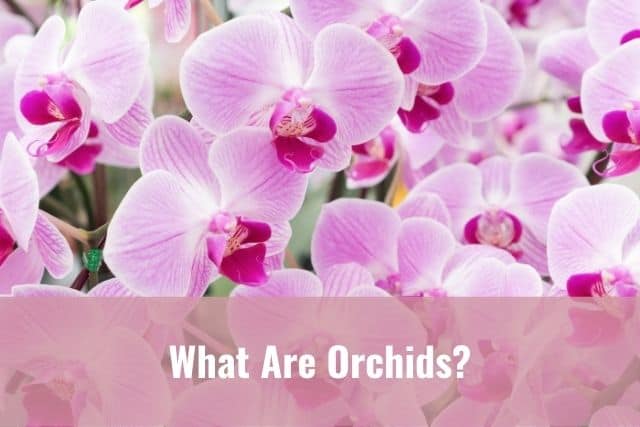
As part of their adaptation to growing on tall tropical trees, orchids require plenty of light and good air circulation to grow. They thrive in high-intensity light and prefer anywhere from 12 to 14 hours of daylight all through the year.
Keep reading to learn more about orchids, what makes them special, and how to grow orchids in your own home.
Please note that these links are affiliate links and as an Amazon Associate, I earn from qualifying purchases. Purchases made through affiliate links in this post may generate commissions at no additional cost to you. Use this link for a discounted Amazon Prime trial. Thank you for your support!
Table of Contents
Are Orchids Difficult to Grow?
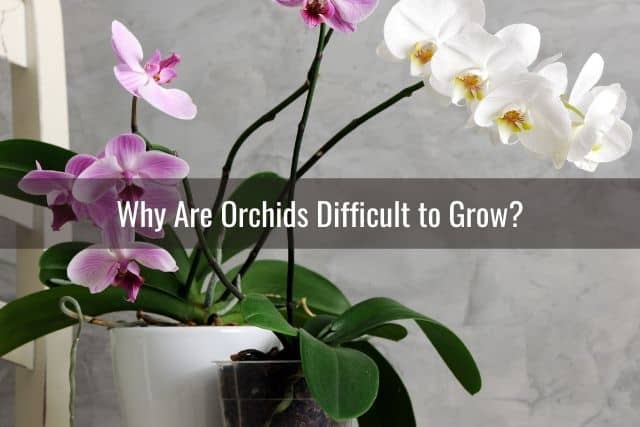
Despite the reputation of being hard to grow, orchids are not difficult to grow. They actually have simple needs once you know what your orchid species requires.
In fact, the most popular orchid sold in stores, the Phalaenopsis orchid, is fairly low-maintenance. First-time growers have a hard time with orchids because they often treat them as regular house plants and are not well versed with their specific care.
Unlike regular plants, most tropical orchids are epiphytes or air plants that grow on trees for support. Others are lithophytes, which grow among rocks.
There is also a third group of orchids that grow in loamy soil. These are called terrestrial orchids, and you can learn more about terrestrial orchids here.
Caring for Your Orchid
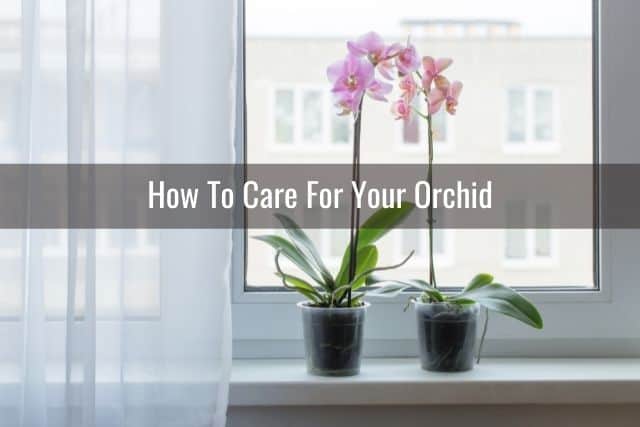
Since there are over 30,000 orchid species globally, you might not have species-specific care and cultivation information for your orchid. Try to research the care needs for your specific orchid species if you know it.
I’ll give you a quick and general overview of what you need to know in order to successfully care for your orchid.
For more information, check out this guide on how to care for your new orchid.
Lighting Requirements
Lighting requirements will vary according to the specific orchid species. In general, most orchids do best with an average of 12 to 14 hours of light each day.
The strength of the light required will differ among various orchid species. For example, Phalaenopsis orchids and Miltoniopsis orchids are considered low-light orchids. Oncidium orchids and Dendrobium orchids are considered to be high-light orchids.
You may need to adjust the lighting in your orchid’s growing area to meet your specific orchid’s needs. For more information, read this guide on how much light an orchid needs.
If your home doesn’t have much natural lighting, you may need to supplement with artificial lighting. Many orchid growers use artificial lights to help their orchids grow year-round.
Roots and Potting Media
Orchid roots are surrounded by a layer of velamen, which helps the orchid absorb water and nutrients. These roots need lots of air circulation to stay happy.
Proper drainage and humidity are key in preventing the orchid roots from rotting or becoming dried and shriveled.
Unlike other house plants, many orchids do not grow in the ground, but rather are planted in special orchid pots with orchid-specific potting media.
Orchid potting media is specifically made to be light, airy and promote drainage. It is usually made of bark chips, perlite, charcoal, and other components.
To protect the health of your orchid’s roots, it is important that you repot your orchid in orchid-specific potting media and not potting soil.
Most orchids also produce aerial roots that resemble odd-shaped and distorted stems. The roots twist up and around the plant. Some people, unaware of their importance, cut them off. Don’t do this! Cutting off the aerial roots limits the orchid’s ability to absorb nutrients and moisture. In turn, this leads to stunted growth.
Watering, Humidity and Fertilization
Orchids also do not require frequent watering. Too much water will lead to root rot and accelerated decomposition of the potting media.
Orchids do not need daily, or even every other day watering. In general, a once a week watering will be more than enough for your orchid. Read this detailed guide on how to water your orchid to learn how to water and care for these unique plants.
Humidification is also key for orchids to grow. Remember, these are tropical plants. Many orchids are used to higher humidity levels than what our homes can provide. The most common orchid, the Phalaenopsis orchid, requires a humidity level around 50%.
Since most homes generally have a humidity level of only 30%, you will likely need to add humidity to your orchid’s growing space. The easiest way to do this is to use a humidifier or a humidity tray.
In addition, unlike regular houseplants, orchids prefer weak fertilizer. When you fertilize your orchid, be sure you use an orchid-specific fertilizer and prepare it according to the product instructions. Then, dilute it further with more water to create a 25% concentration.
Regular-strength fertilizer, along with too frequent feeding, can cause root burn in your orchids. Most orchids like to be fertilized “weakly, weekly.” You can read more here about how to fertilize your orchids.
Orchid Growth Patterns
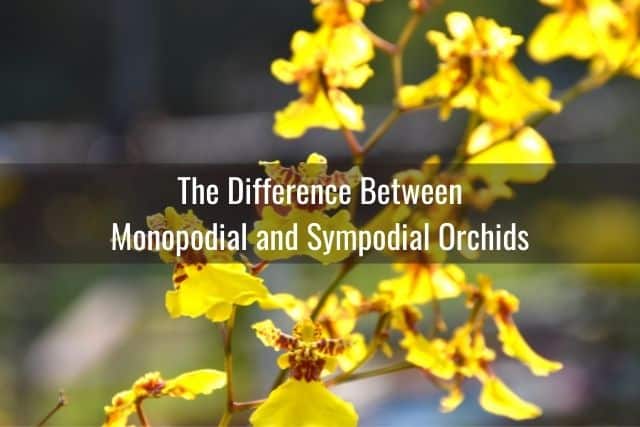
Orchids are sometimes thought of as perennial herbs, due to their lack of a woody structure. Typically, orchids fall into two broad categories characterized by their growth patterns:
- Monopodial orchids: As the name suggests, these orchids have a single upright stem with leaves forming opposite each other and a flower stem which forms at the base of leaves. Vandas and Phalaenopsis orchids are some of the orchid species in this category.
- Sympodial orchids: This variety of orchids develops shoots from rhizomes. Leaves and flowers form at the apex of the new shoots. Most sympodial orchids are drought tolerant because they store water and nutrients in a pseudobulb. Cymbidium, Dendrobium, Oncidium, and Cattleya orchids are some of the varieties in this group.
Orchids without a pseudobulb are monopodial orchids. However, orchids with large pseudobulbs are typically sympodial orchids. They are more drought-resistant than those without. They require infrequent watering and can grow on a coarse medium such as lava rock and chunks of bark.
Orchid Flowers
Only a handful of orchids bloom during summers as the majority start making their flower stems in fall or winter. Using a bloom booster orchid fertilizer in the fall can also encourage your orchid to have a prolific blooming season.
Before a bloom appears, an orchid forms a stalk, called an inflorescence. This can resemble an aerial root, but it grows upright instead of down or sideways.
The bloom stalk takes at least a month to create a flower bud. It will take an additional month for the bud to open into a flower.
As the flower buds are developing, take care not to inadvertently expose your orchid to fumes or gases. Certain fumes or gases can cause bud blast and orchid flowers to fall off early.
Most orchids bloom once a year but can stay in bloom for up to four months. The blooming period will vary by orchid species. You can also get your orchid to rebloom using a few simple techniques and care practices.
Final Thoughts
With the proper care, many orchid plants can live for years, if not decades. Orchids add beauty to homes and can be used to enhance the feng shui in any space.
In addition, orchids are a symbol of love, beauty and fertility. There is a good reason why orchids are well-loved and such a popular gift!
If you enjoyed this article, please pin it and share!
